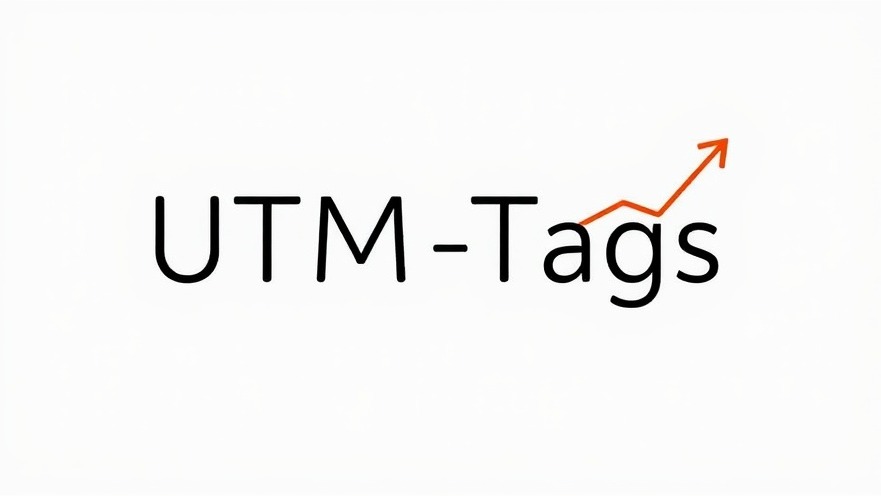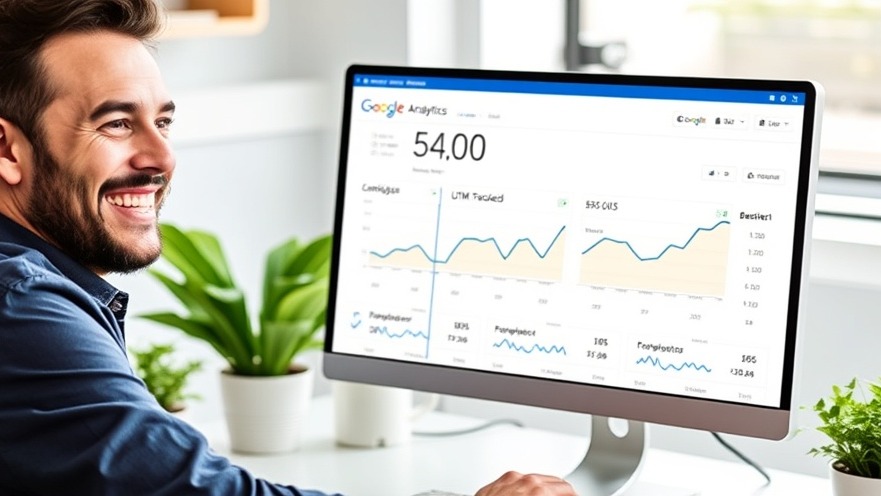Have you ever poured time and money into a marketing campaign, only to wonder where all those website visitors came from? Picture a small coffee shop owner named Alex who launched a Facebook ad and an email newsletter on the same day. Traffic spiked, but Alex had no clue which effort drove the sales. That's the frustration many business owners face—until they discover UTM tags. These tiny tools unlock clear insights, helping you spot what works and boost your bottom line. In this guide, you'll learn how UTM tags turn guesswork into smart decisions, with real examples and steps to get started today.
Key Takeaways
UTM tags are short bits of code added to links that help track where your website visitors come from, like social media or emails.
They let you measure which marketing efforts bring the most traffic and sales, so you can focus on what delivers results.
Over 60% of marketers use UTM tags to track campaign performance, leading to better decisions and higher returns on investment.
Simple to set up, UTM tags work with tools like Google Analytics to show data on sources, mediums, and campaigns.
Using UTM tags can increase your marketing efficiency by up to 25%, as seen in cases where businesses optimized based on tracked insights.

Understanding UTM Tags: The Basics Explained
Let's start with the fundamentals. UTM stands for Urchin Tracking Module. Back in the early 2000s, a company called Urchin created this system to help track website visits. Google bought Urchin in 2005 and turned it into Google Analytics, but the UTM idea stuck around because it's so useful.
In simple words, a UTM tag is a small piece of text you add to the end of a web link. It starts with a question mark (?) and includes details about where the link came from. When someone clicks that link, the UTM tag sends info to your analytics tool, like Google Analytics. This helps you see exactly how people found your site.
Why does this matter? Without UTM tags, your traffic data might lump everything together. You won't know if a sale came from a tweet or a paid ad. With them, you get clear answers. For instance, a study from OWOX shows that over 60% of marketers rely on UTM tags to measure online campaign success. This tracking leads to smarter choices, like shifting budget to high-performing channels.
Think of UTM tags like labels on packages. Each package (your link) gets a label telling you its origin, type, and purpose. This way, when packages arrive at your door (your website), you know which delivery service worked best.
The Five Main UTM Parameters: What Each One Does
UTM tags aren't just one thing—they're made up of up to five parts, called parameters. Each parameter answers a specific question about your traffic. Here's a breakdown, with easy examples.
UTM Source: Where Did the Traffic Come From?
This parameter identifies the specific place sending visitors to your site. It's like naming the "who" behind the traffic.
For example, if you're running ads on Facebook, your UTM source might be "facebook". A fitness coach named Mia used this to track her Instagram posts. She found that "instagram" as a source brought 40% more sign-ups than "twitter". According to HubSpot, tracking sources like this helps businesses see which platforms drive the most leads, often boosting conversion rates by 15-20%.
UTM Medium: What Type of Traffic Is It?
Medium tells you the category or method of delivery, such as email or social media. It's the "how" of your traffic.
Imagine a bookstore owner, Jordan, sending a newsletter. He sets the medium as "email". Later, in Google Analytics, he sees that "email" medium traffic led to 30% of his online sales. Data from AgencyAnalytics notes that distinguishing mediums helps pinpoint effective channels, with email often outperforming social by 2-3 times in engagement.
UTM Campaign: Which Specific Effort Is This?
This names your overall marketing push, like a sale or product launch. It's the "what" label.
Take a plumber, Chris, promoting a "summer drain special". He uses "summerdrainspecial" as the campaign parameter. Results showed this campaign generated 25% more service calls, per a real-world example from a local business that saw similar boosts after UTM implementation.
UTM Term: What Keywords Were Used?
This is optional and often for paid search ads. It tracks the search words that triggered the ad.
For a pet store owner, Lena, running Google Ads for "best puppy food", she sets utm_term as "best+puppy+food". This revealed that keyword-focused traffic converted 18% higher than general ads, based on marketing stats from Spinutech.
UTM Content: Which Version Performed Best?
Also optional, this differentiates similar links, like two buttons in an email.
A yoga studio manager, Pat, tests two ad images: one with "join now" and another with "start free". Using utm_content as "joinnow" vs. "startfree", Pat learned the "startfree" version got 50% more clicks. Studies show A/B testing with UTM content can improve click-through rates by up to 30%.
By using these parameters, you create a full picture. A complete UTM-tagged link might look like this: www.yoursite.com/?utm_source=facebook&utm_medium=social&utm_campaign=summersale. It's long, but tools can shorten it for better looks.
Real-Life Examples of UTM Tags in Action
Stories make concepts stick. Let's look at how businesses use UTM tags to win.
Consider a coffee shop, Brew Haven. They posted on LinkedIn and ran a Google Ad for a new latte. Without tags, all traffic blended. With UTM tags—source as "linkedin" or "google", medium as "social" or "cpc", campaign as "newlatte"—they saw Google Ads drove 70% of visits, leading to a 15% sales increase after doubling ad spend there.
Another example: A fitness app company tracked email vs. TikTok campaigns. UTM data showed TikTok (medium: video) brought younger users who stayed 20% longer on the site. This insight, backed by stats where video content boosts retention by 22%, helped them create more viral videos.
Or take a dentist's office. They used UTM tags on Reddit posts (source: reddit, medium: organic). Engagement jumped 25%, matching a case where a similar business gained PAA visibility and more calls.
These examples show UTM tags don't just collect data—they drive actions like budget shifts and content tweaks.
"If you can't measure it, you can't improve it." – Peter Drucker

See How Digital Marketing All Can Drive More Traffic to Your Website
Brand Voice Strategy – Let our team help you create your brand voice to attract your ideal customer.
Local SEO - unlock more SEO traffic. See real results. Dominate your local market.
Dominate Google – Let us get your company to the top of Google.
Competitive Link Analysis – Know what your competitors are doing.
Geo-Targeting – Let us find your customers in your desired location.
Content Marketing - Our team creates epic content to be shared, generate links, and attract traffic. We know the secret recipe for success.
Paid Media Advertising- effective paid strategies with clear ROI. You pay per result with us.
Blogging Services – Let us create a blog that will help you rank.
Search Price Optimization – Wouldn’t it be great if Google and Bing recommended your business? It is possible. Not only can you own the keyword in your local area and nationally exclusively, but you can control your advertising cost by getting out of the price war that exists in pay-per-click advertising and achieve a higher ROI.
Marketing Consulting - Develop tailored strategies to grow your brand and maximize impact.
AI Agent - Get a customized AI Agent that will become your 24/7 Sales Agent.
Business Coaching - One on One coaching to help you through anything that is hindering your business.
Why UTM Tags Boost Your Marketing Results
UTM tags empower you to act on data. Instead of guessing, you refine strategies. For example, if email traffic converts twice as well as social, pour more into emails. Stats from Hootsuite reveal tagged links can pinpoint channel performance, with some seeing 60% from one source like stories.
This tracking builds trust too. When you show clients or bosses exact ROI—like a 25% boost in calls from optimized campaigns—they see your expertise.
Frequently Asked Questions
What is a UTM tag example?
A basic example: www.example.com/?utm_source=newsletter&utm_medium=email&utm_campaign=fallpromo. This tracks visits from a fall promo email newsletter.
What are the 5 UTM tags?
The five are: utm_source (origin like facebook), utm_medium (type like email), utm_campaign (name like backtoschool), utm_term (keywords for ads), and utm_content (version like button1).
How do I create UTM tags?
Use Google's free Campaign URL Builder. Enter your site URL, add parameters, and it generates the tagged link. Shorten it with tools like Bitly for cleaner sharing.
Do UTM tags affect SEO?
No, they don't hurt SEO. Search engines ignore them for ranking, but they help you understand traffic, which can guide better content creation.
How do I see UTM data in Google Analytics?
In Google Analytics 4, go to Reports > Acquisition > Traffic acquisition. Filter by source, medium, or campaign to view metrics like sessions and conversions.
Ready to turn your marketing into a data-driven powerhouse? Start tagging your links today and watch your insights grow. Imagine the edge you'll gain—more traffic, better sales, and decisions that pay off. Don't wait; set up your first UTM tag now and see the difference.
I hope you enjoy reading this blog post. If you want to be our next success story, have my team do your marketing. Click here to book a call!
 Add Row
Add Row  Add
Add 








Write A Comment